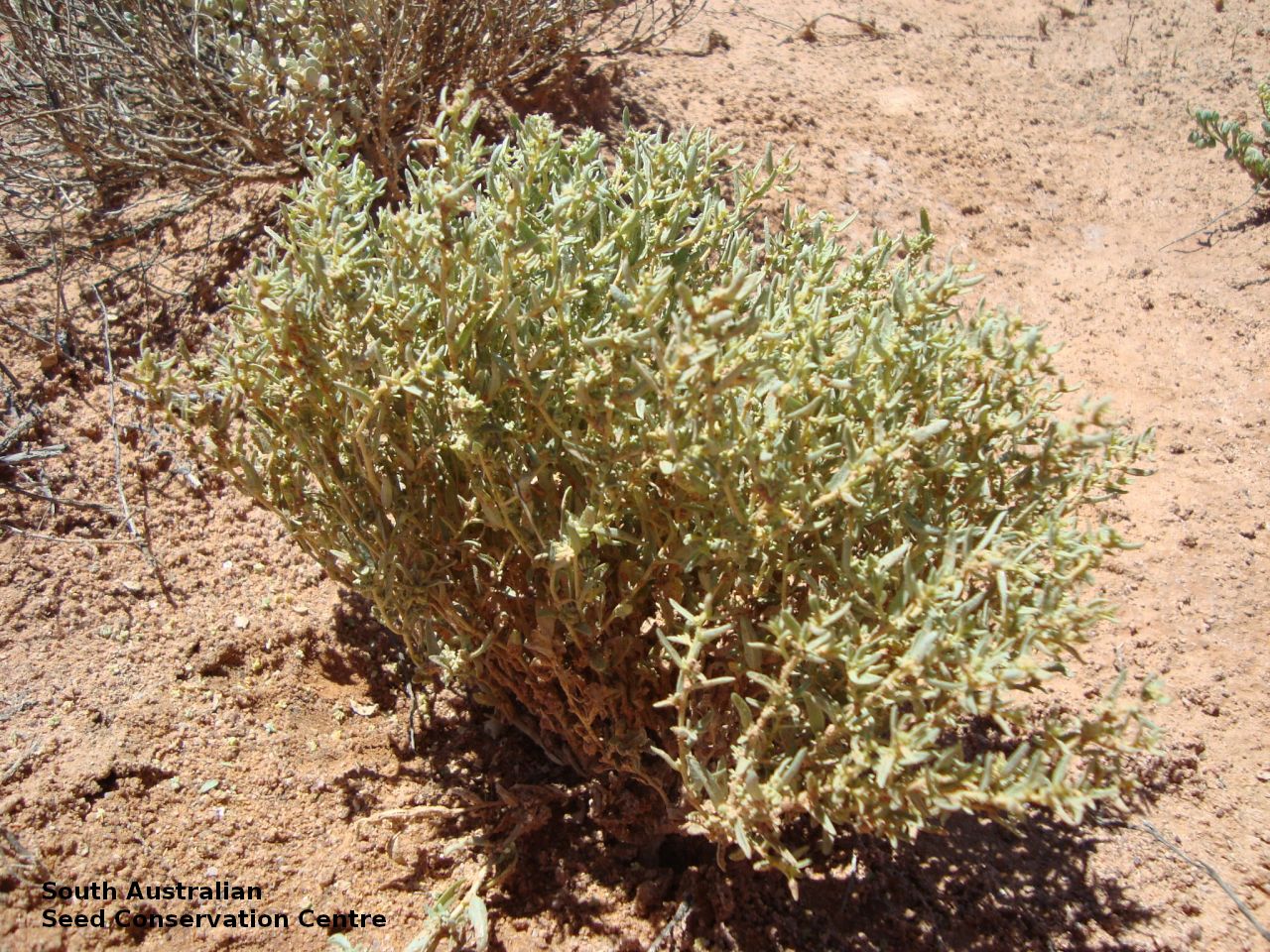
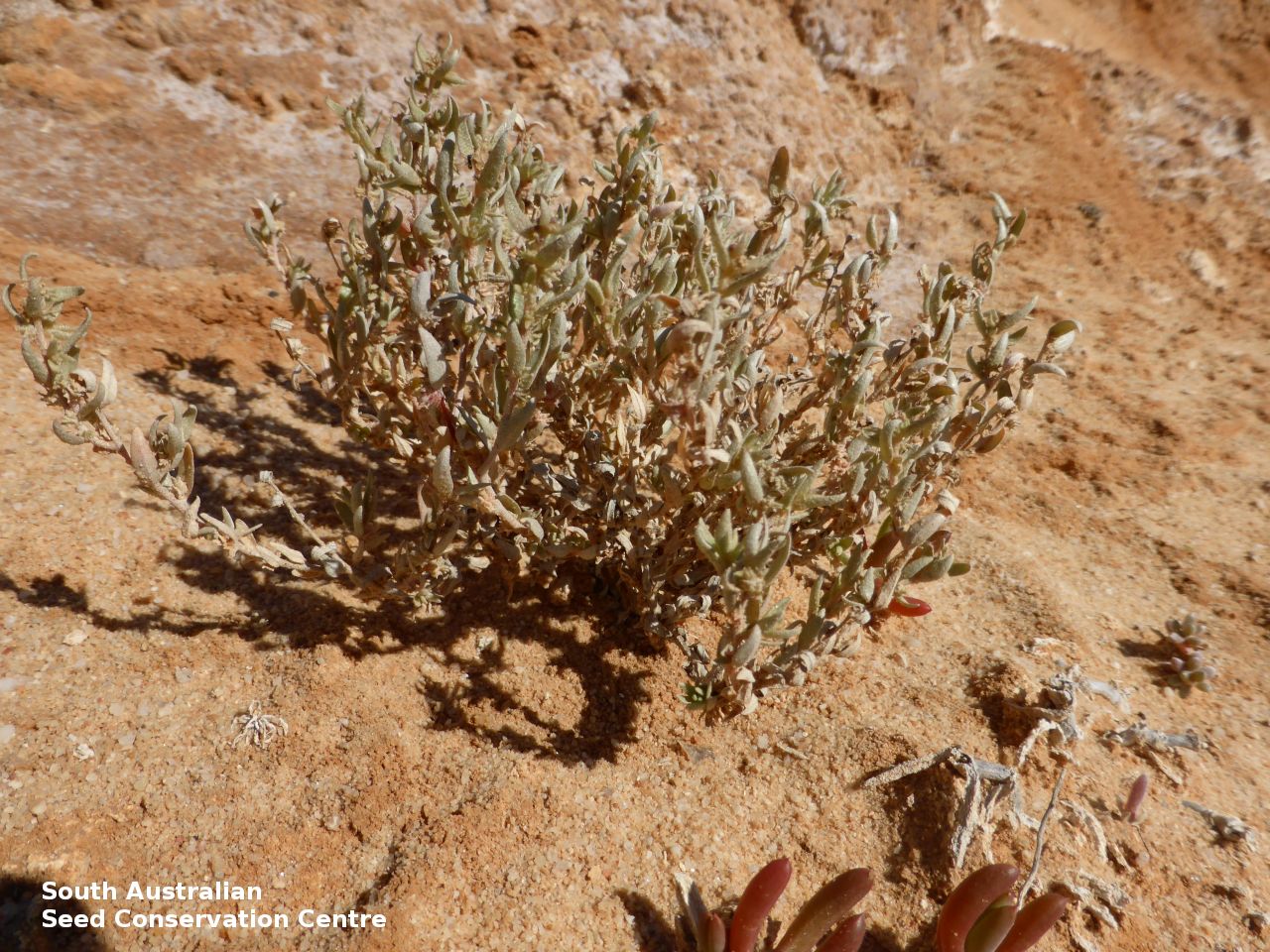
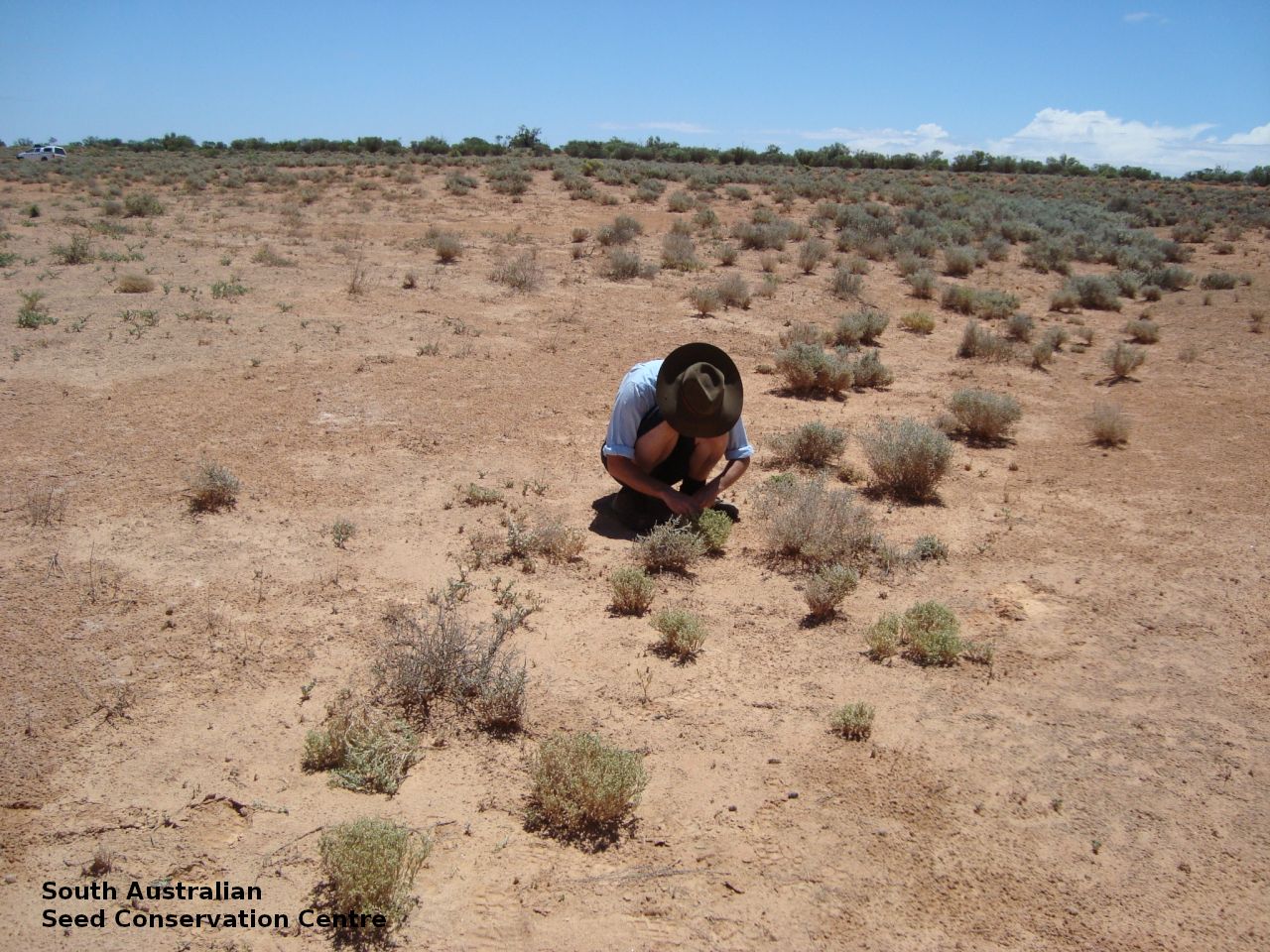
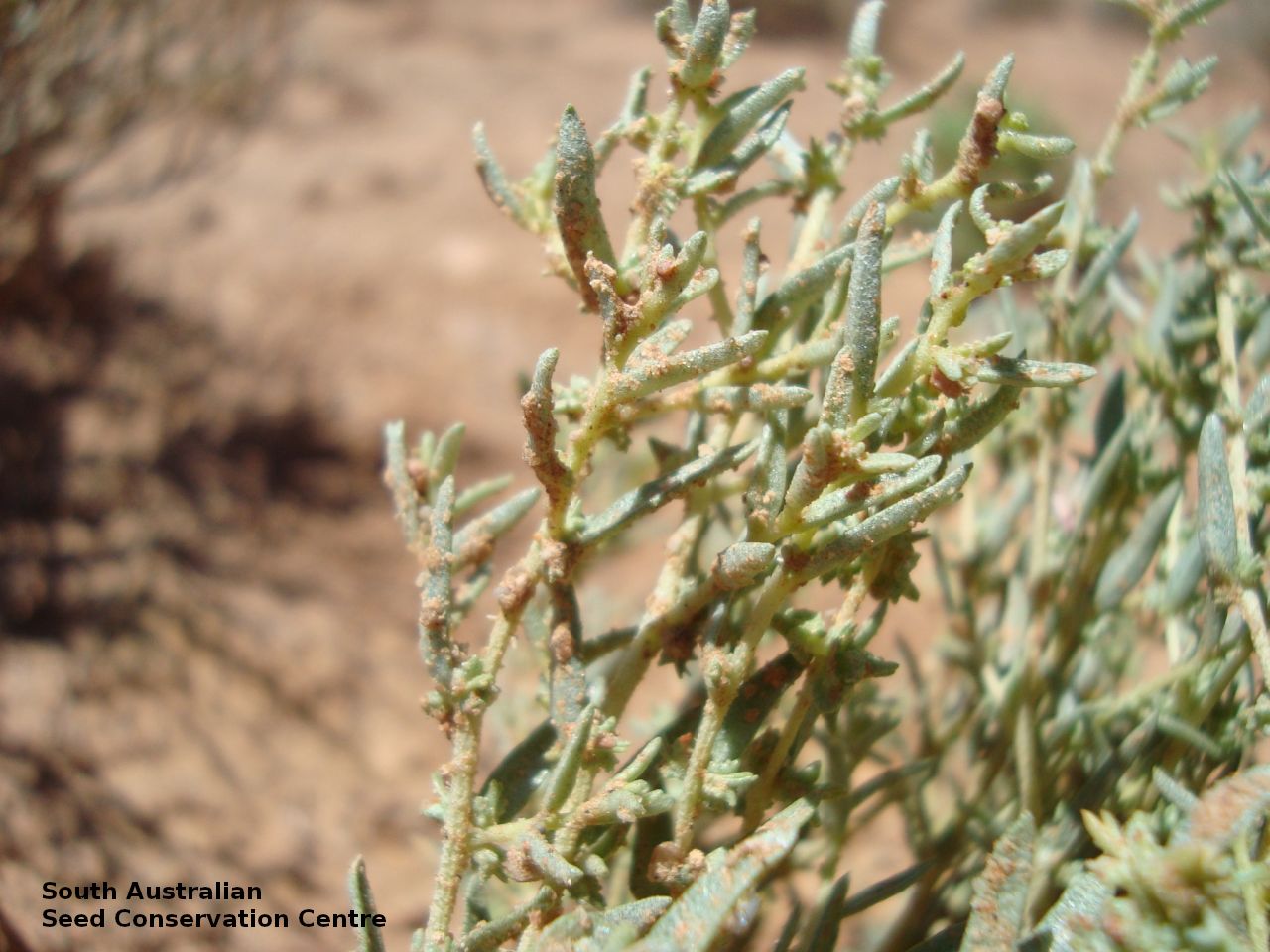
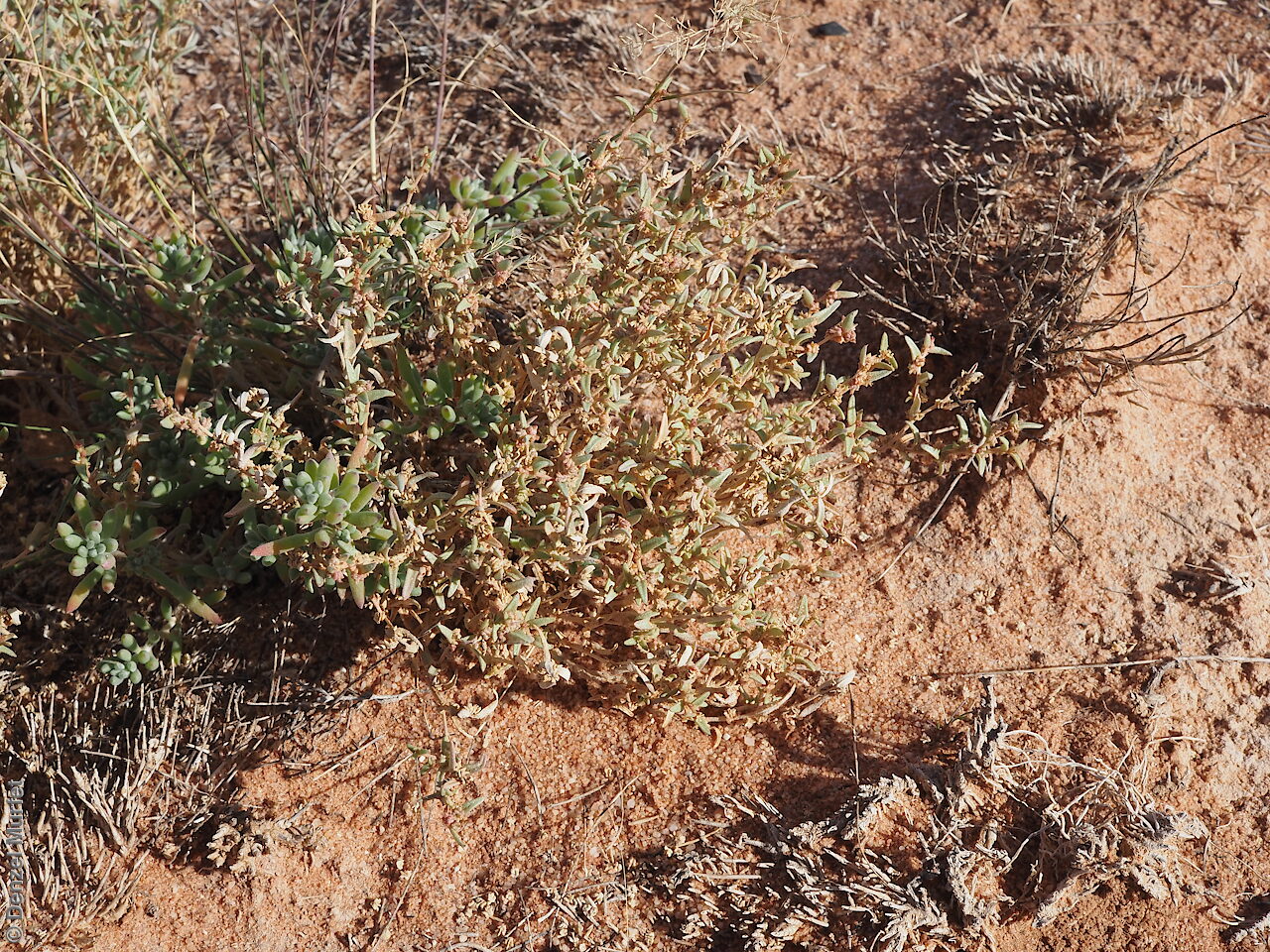
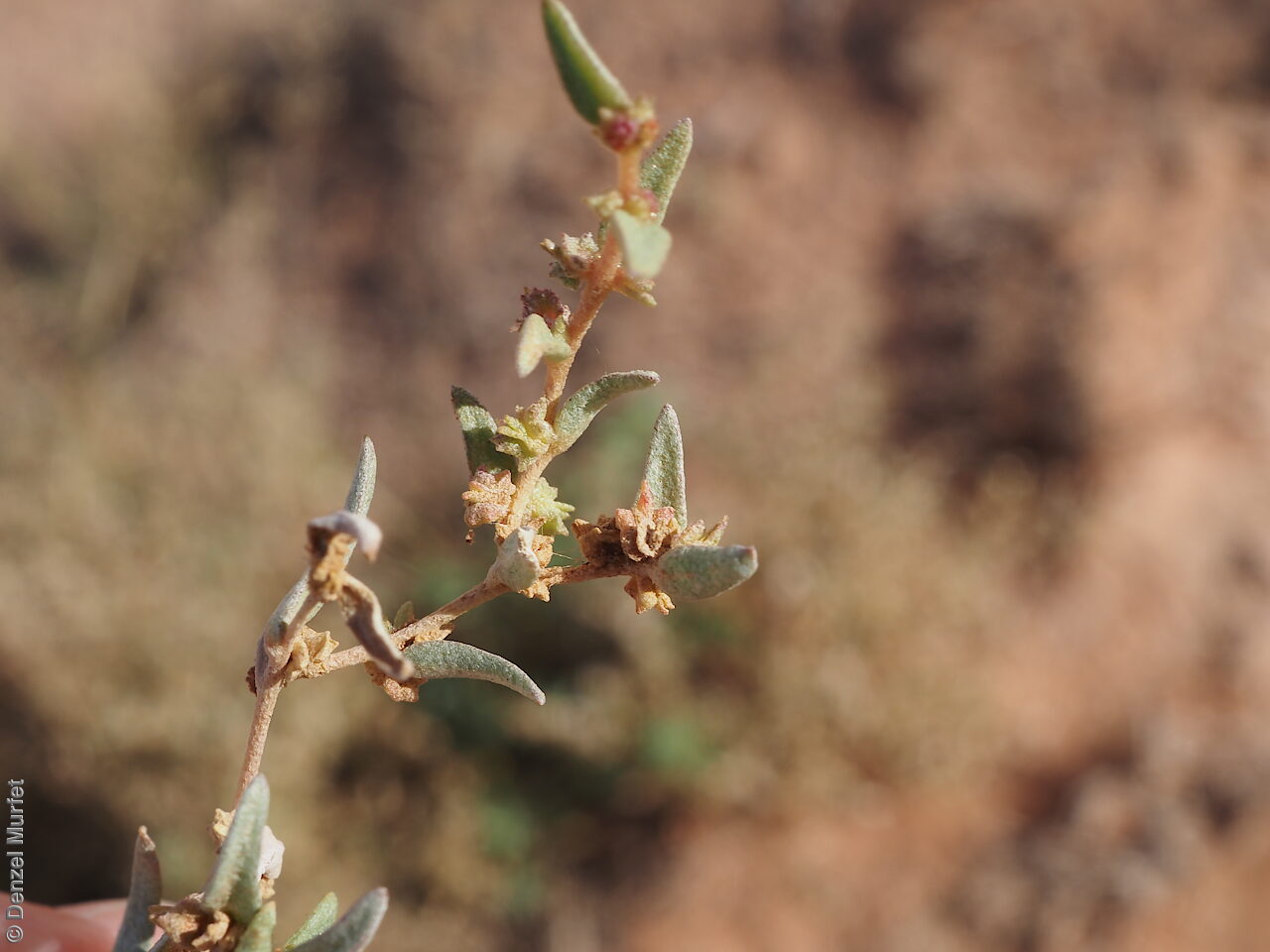
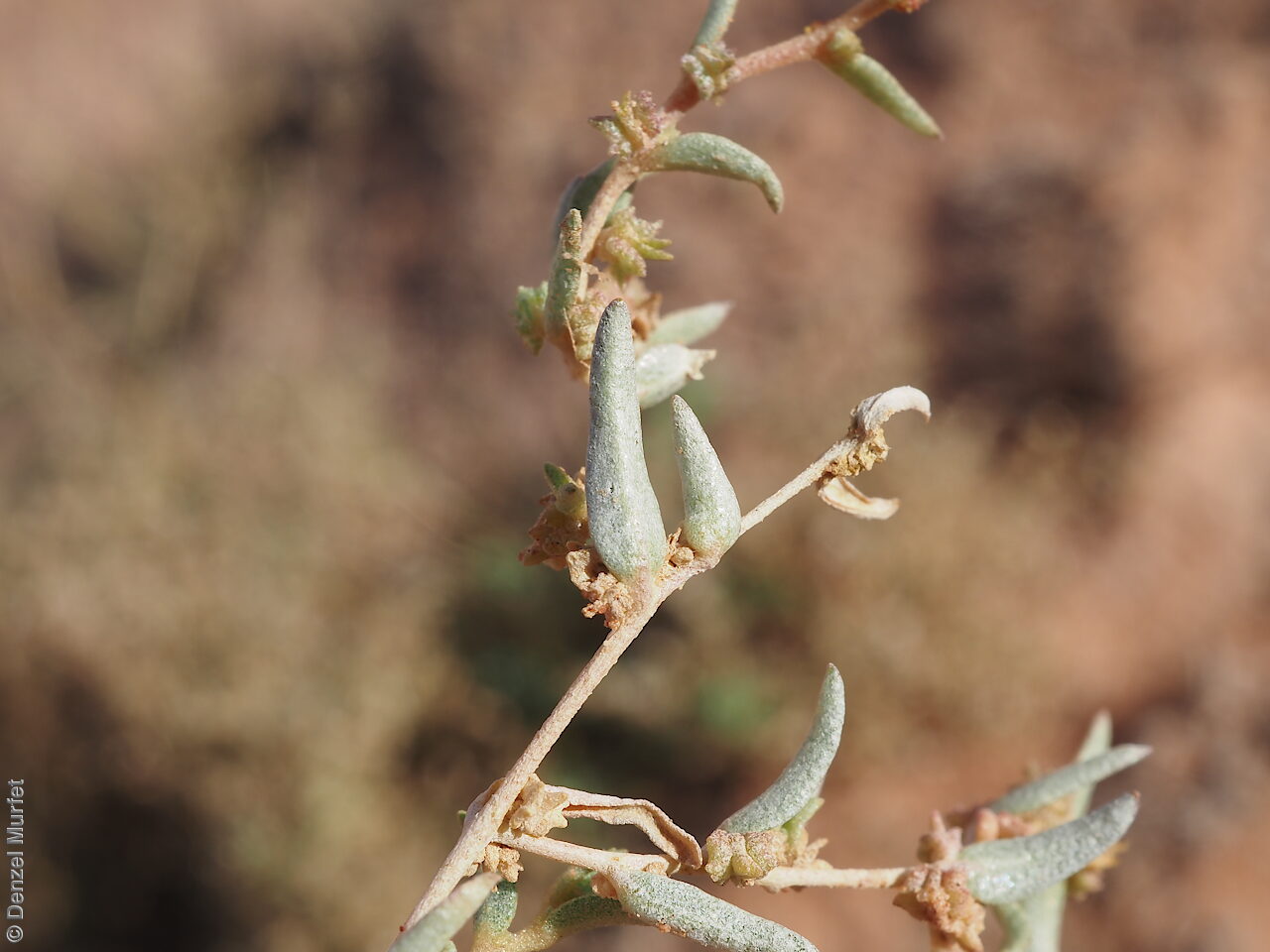
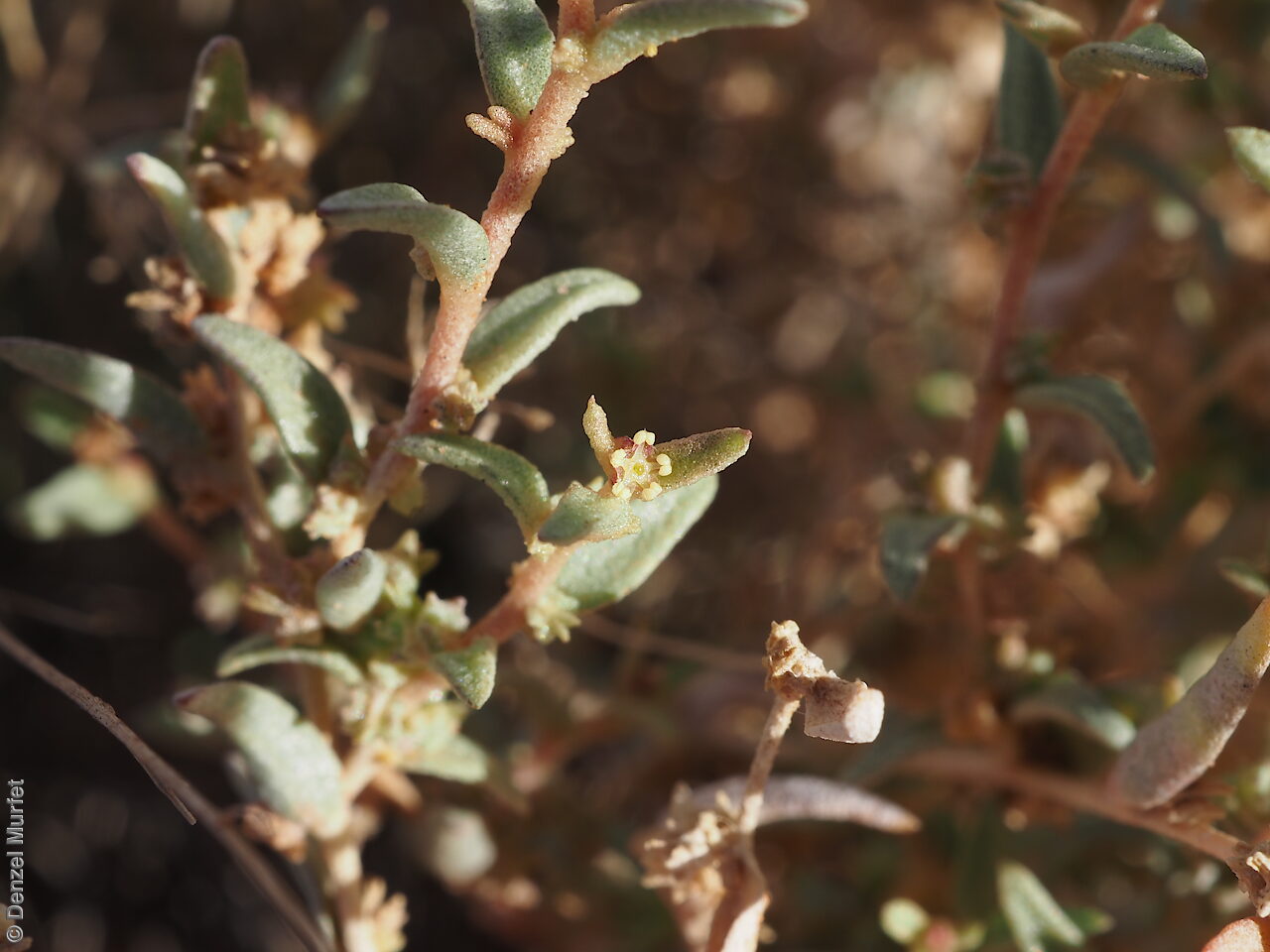
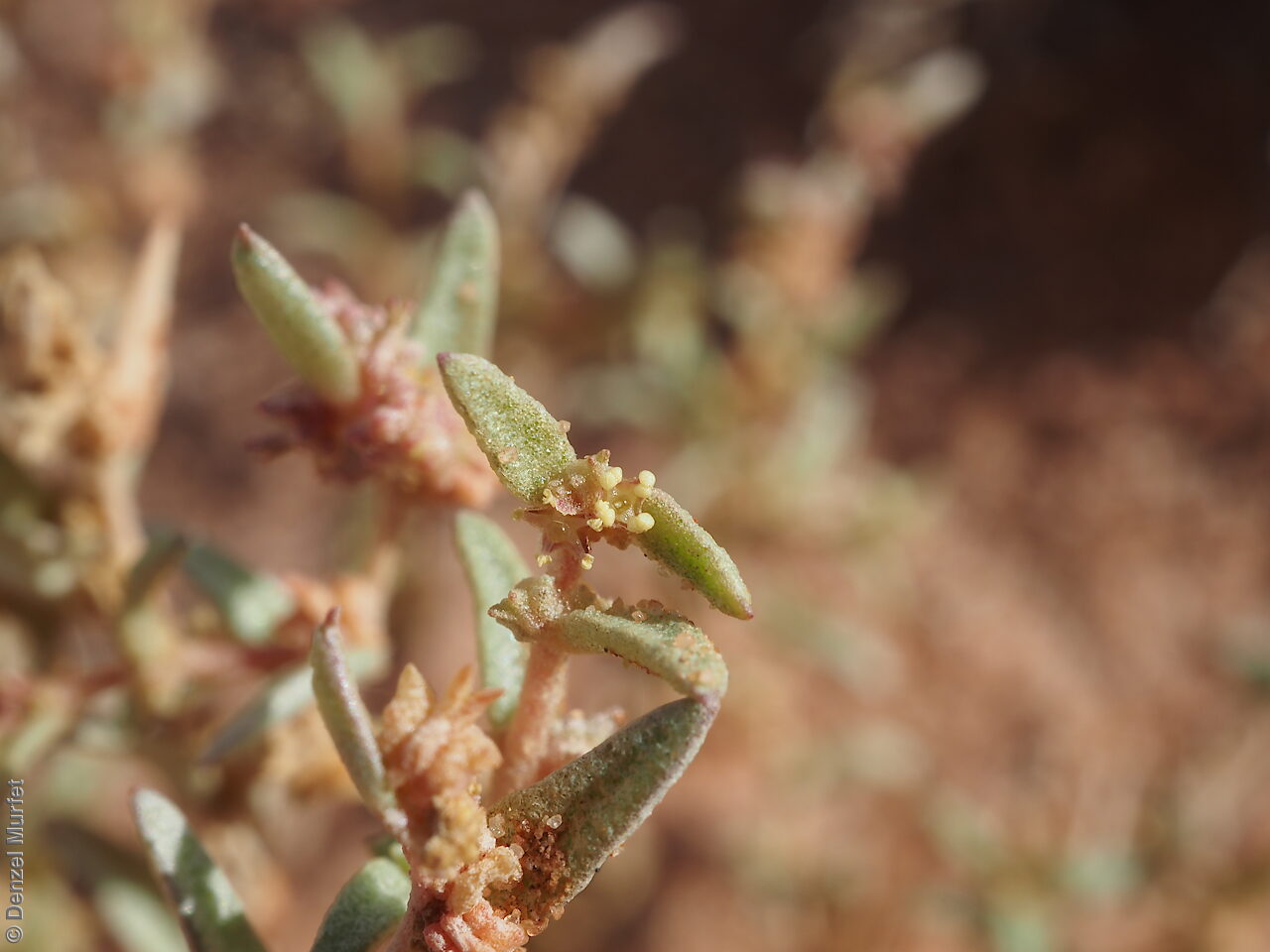
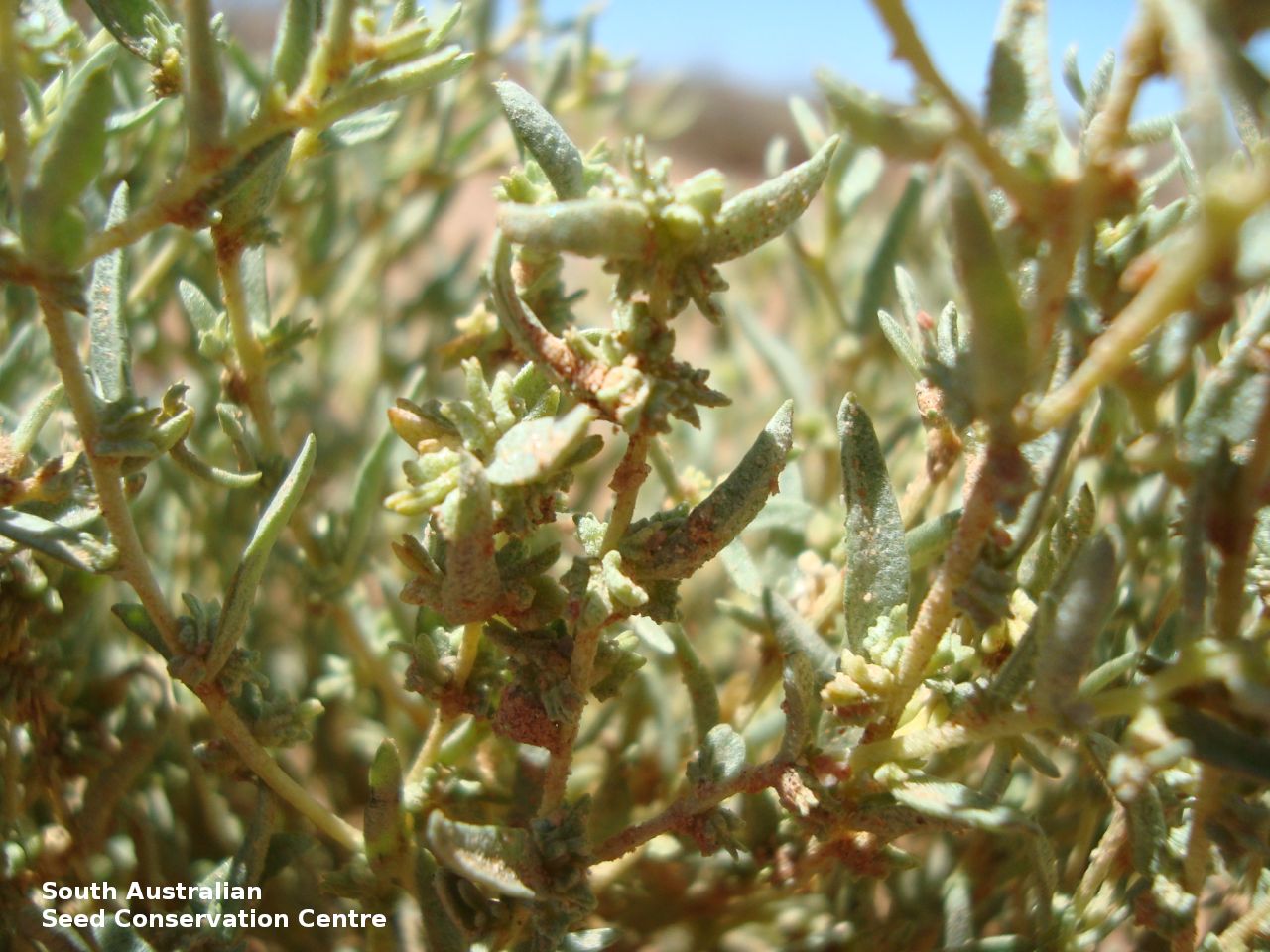
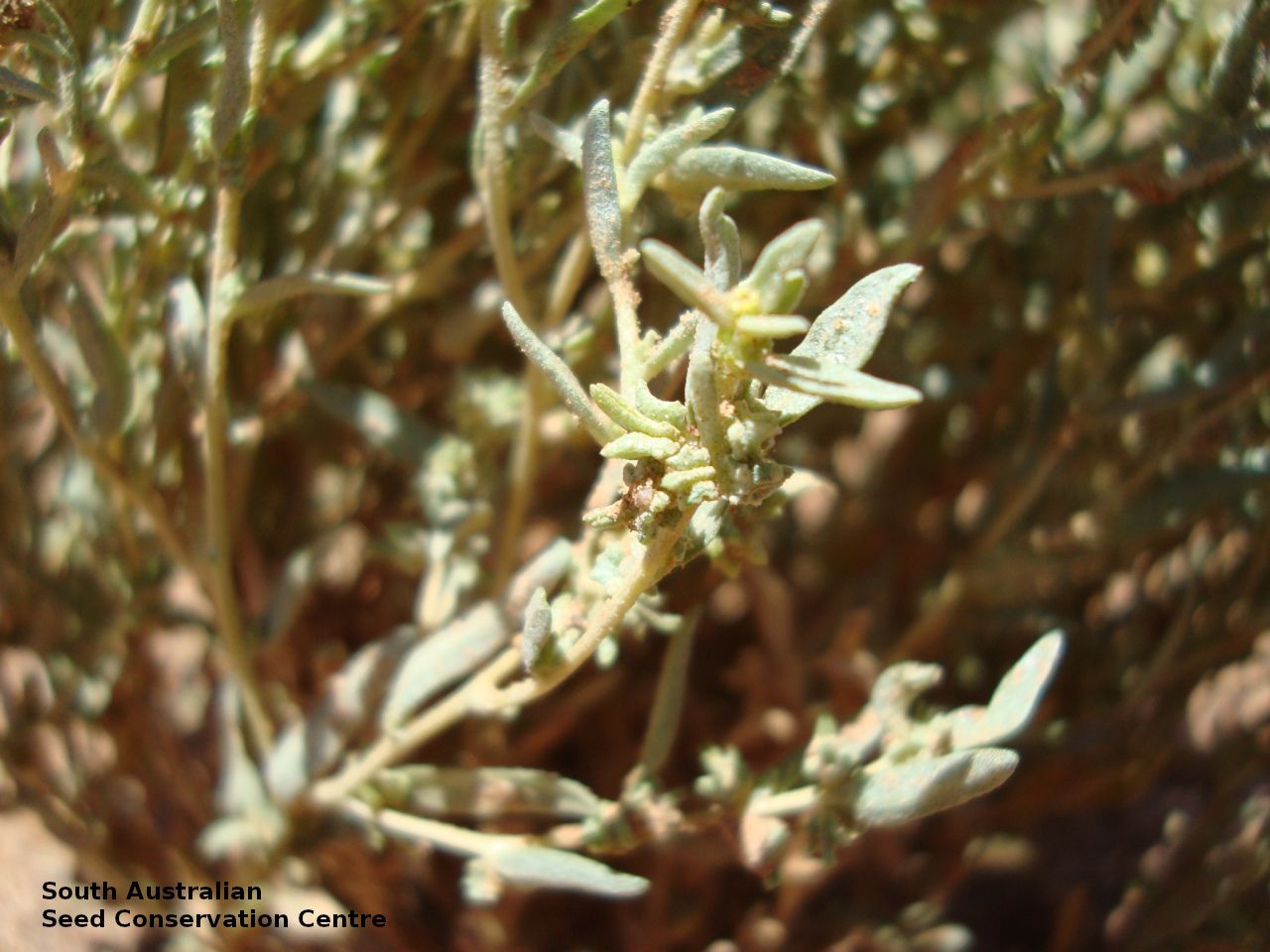
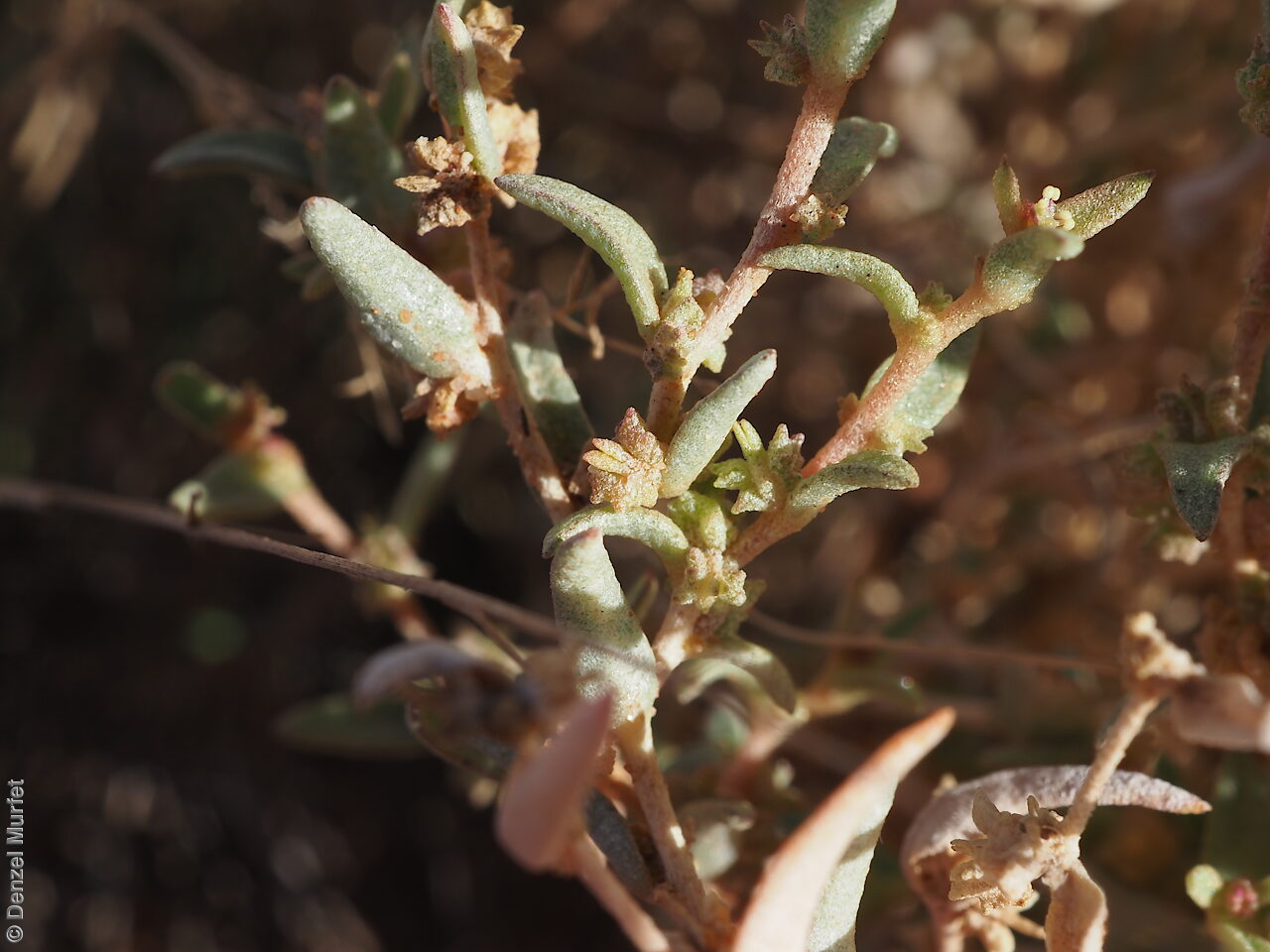
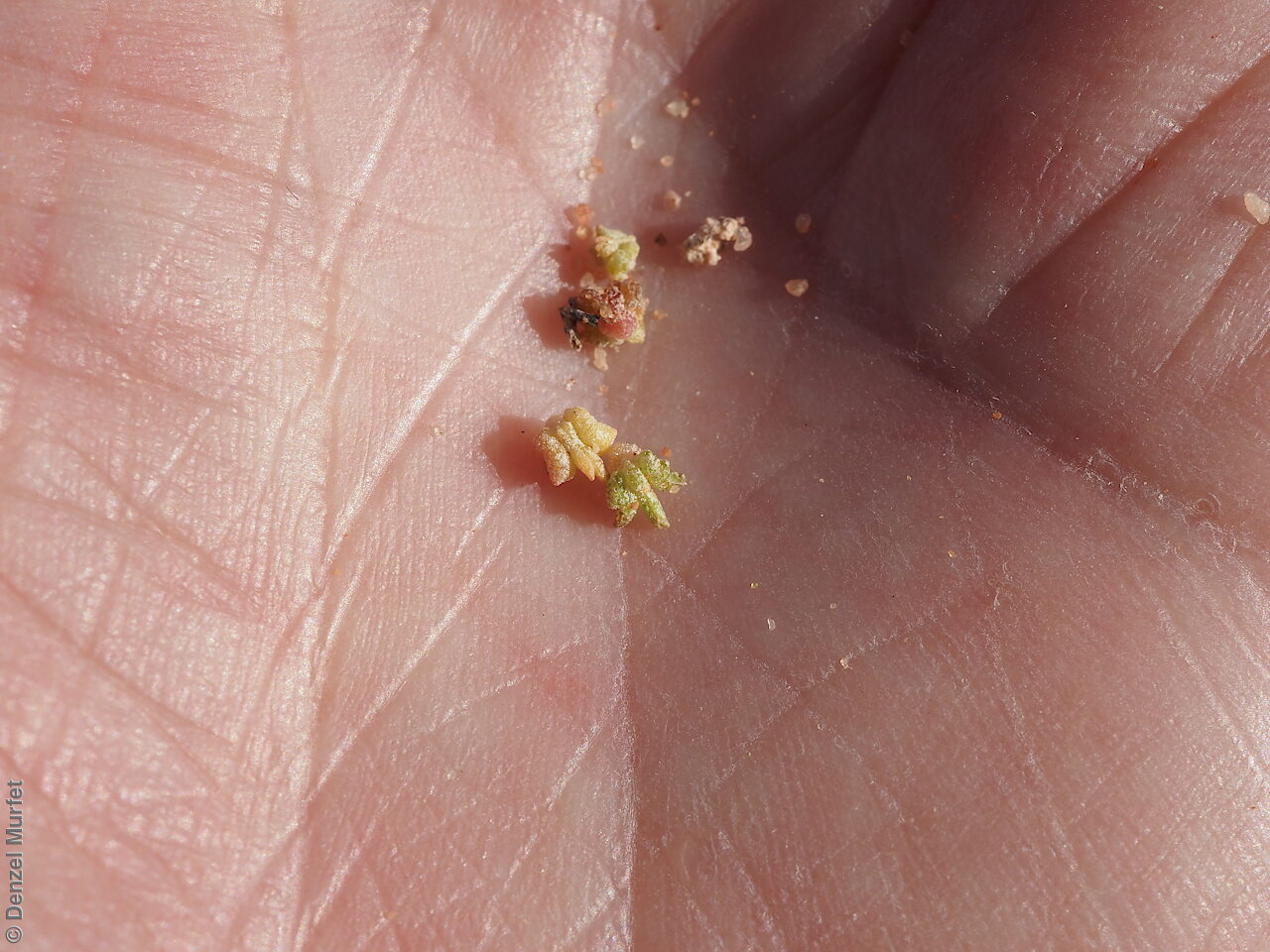
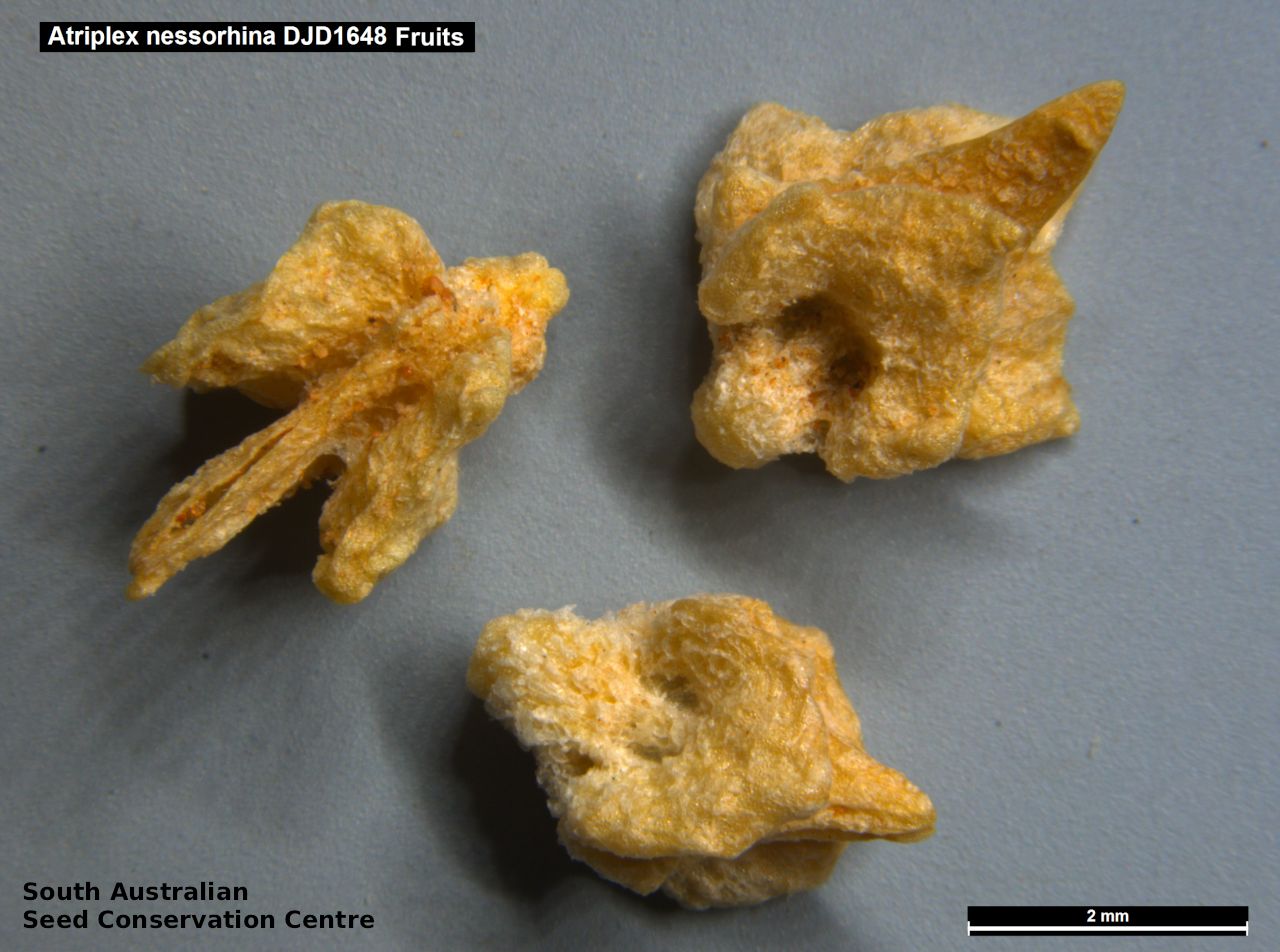
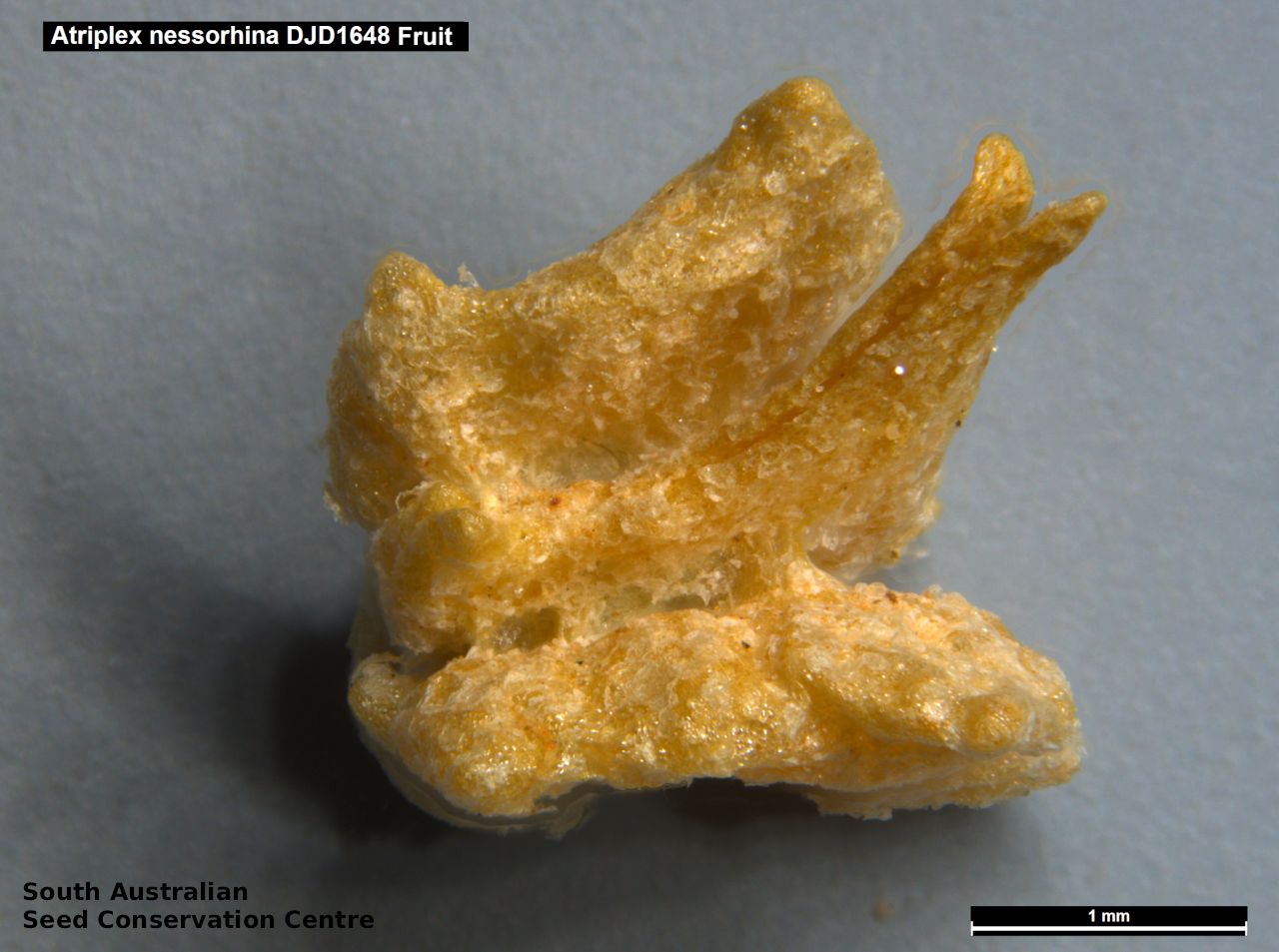

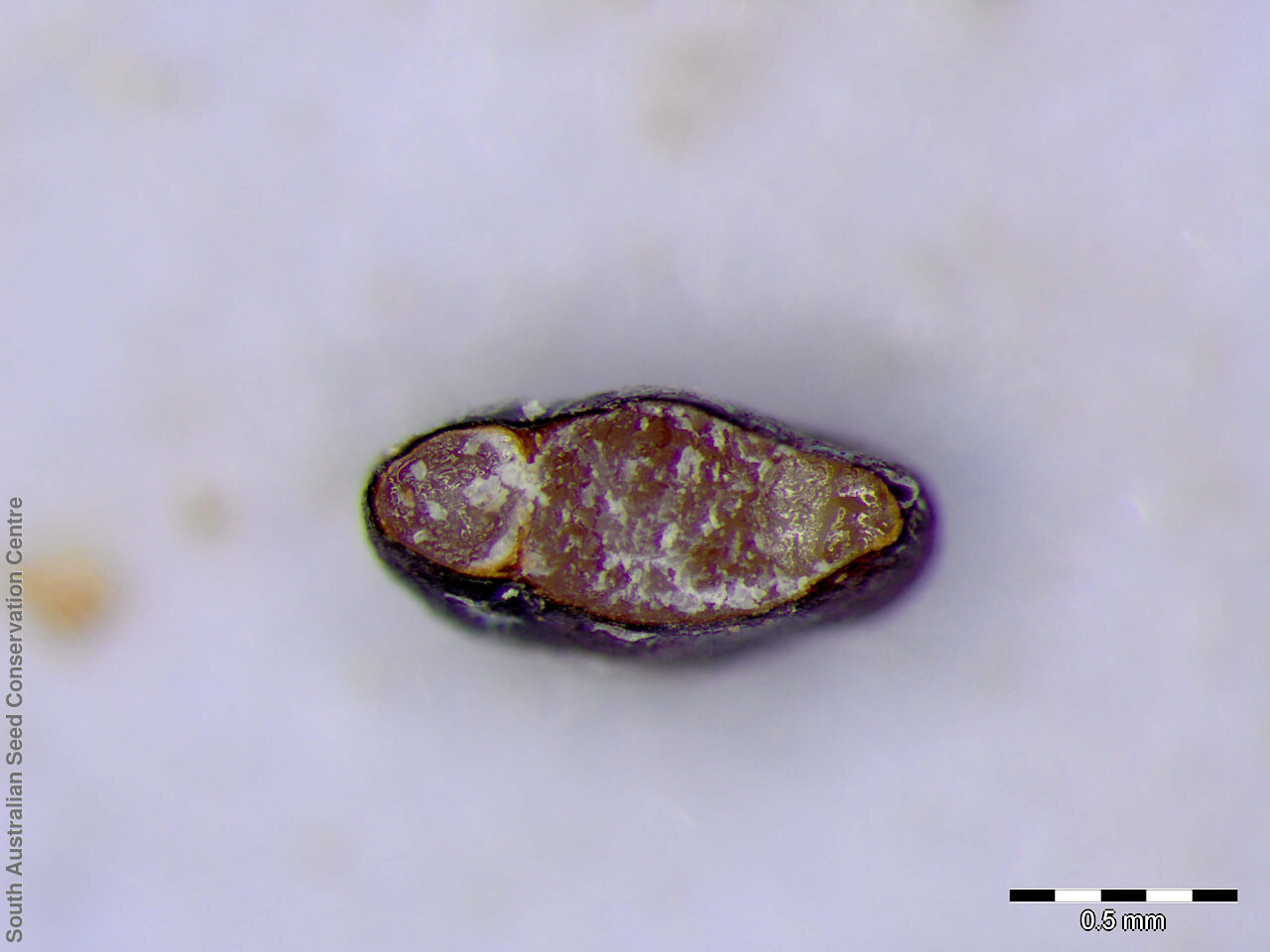

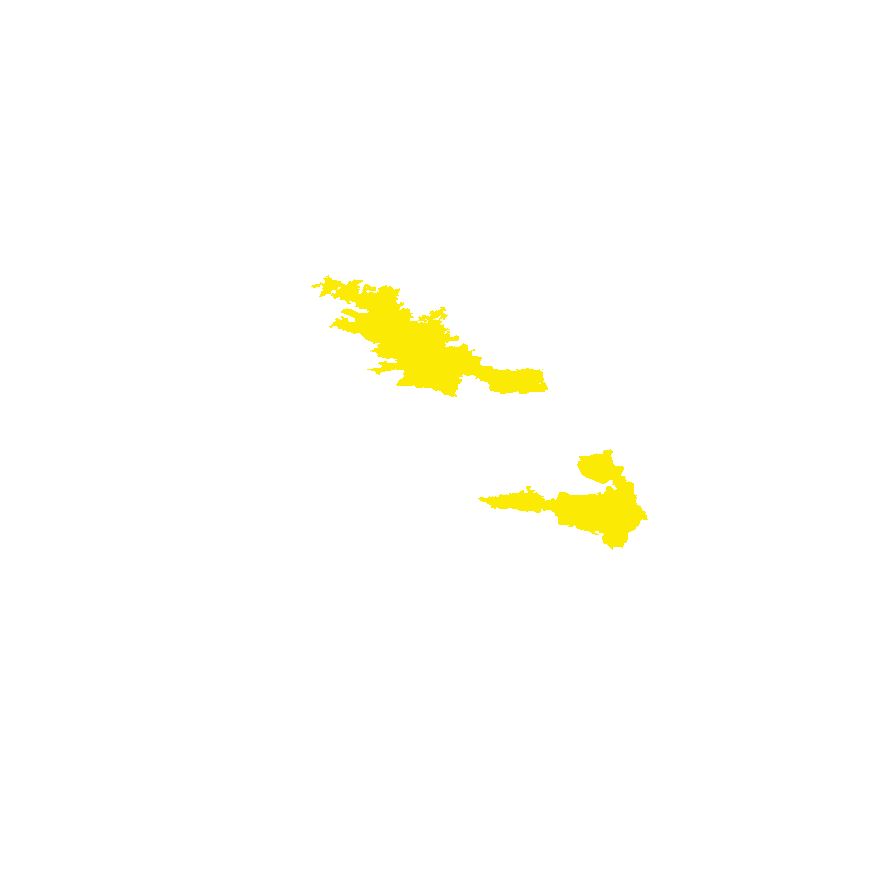
Etymology
Atriplex from the Latin atriplexum' meaning an orach, a saltbush; an Ancient Latin name for this plant.
Distribution and status
Found only around salt lakes east of Tarcoola, with one record in Lake Gilles in South Australia. Also found in Queensland and New South Wales. Native. Rare in South Australia. Common in other states.
Herbarium region: Gairdner-Torrens
NRM region: South Australian Arid Lands
AVH map: SA distribution map (external link)
Plant description
Rounded annual or short-lived perennial shrub to 30cm high. Leaves thin with a scaly sheen on each side; very narrow-oblong to oblanceolate, to 5cm long, acute to obtuse, entire or remotely dentate; narrowed at the base to an indefinite petiole. Male and female flowers on the same plant. Flowers in clusters, axillary glomerules with mixed male and female, the lower ones female. Fruits are pale-brown papery fruit to 10mm long with a central lob, splitting into two like a beak and with two short lobes on either side. Seeds are small globular to semi-flat brown seeds 1-2mm long, at the base of the fruit. Seed embryo type is peripheral.
Seed collection and propagation
Collect seeds between January and December. Rub hands through the branches to dislodge mature fruits from the plant. The pale-brown mature fruit should full off easily with a hard brown seed inside. Place the fruits in a tray and leave to dry for one to two weeks. No cleaning is required if only the fruits are collected. The seed can be stored in the fruit or can be cleaned further. Rub the fruit gently by hand to dislodge the seeds. Use a sieve to separate the unwanted material. Store the seeds with a desiccant such as dried silica beads or dry rice, in an air tight container in a cool and dry place. From one collection, the seed viability was high, at 75%.
| Location | No. of seeds (weight grams) | Number of plants | Date collected | Collection number Collection location | Date stored | % Viability | Storage temperature |
|---|---|---|---|---|---|---|---|
| MSB | 1,400 (0.95 g) | 20 | 21-May-2007 | RJB71961B Gairdner-Torrens | |||
| BGA MSB | 6,500 (10.52 g) 6,500 (10.52 g) | 50 | 3-Nov-2008 | DJD1648 Gairdner-Torrens | 1-Jun-2010 | 75% | -18°C |
Number of plants: This is the number of plants from which the seeds were collected.
Collection location: The Herbarium of South Australia's region name.
% Viability: Percentage of filled healthy seeds determined by a cut test or x-ray.